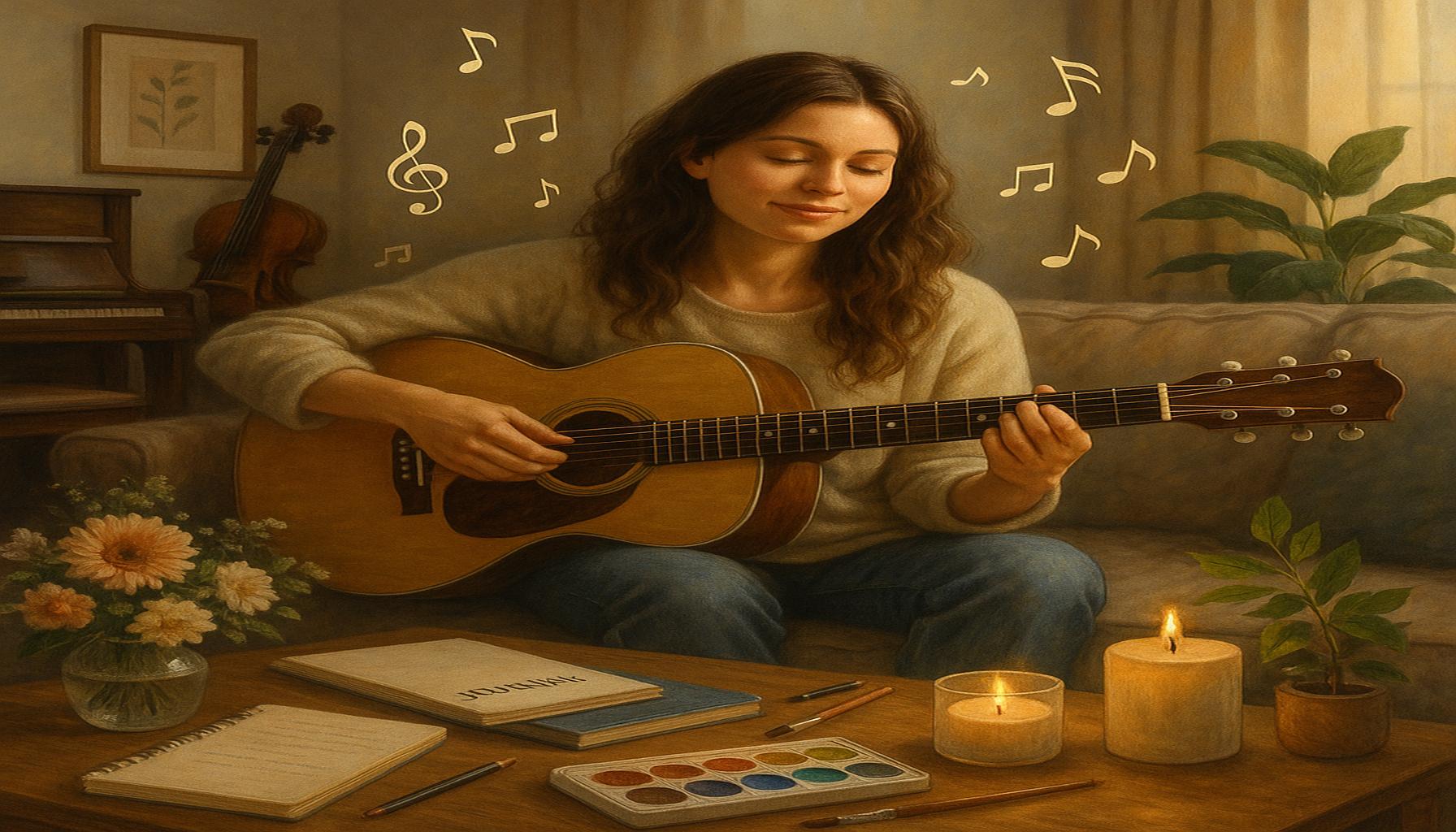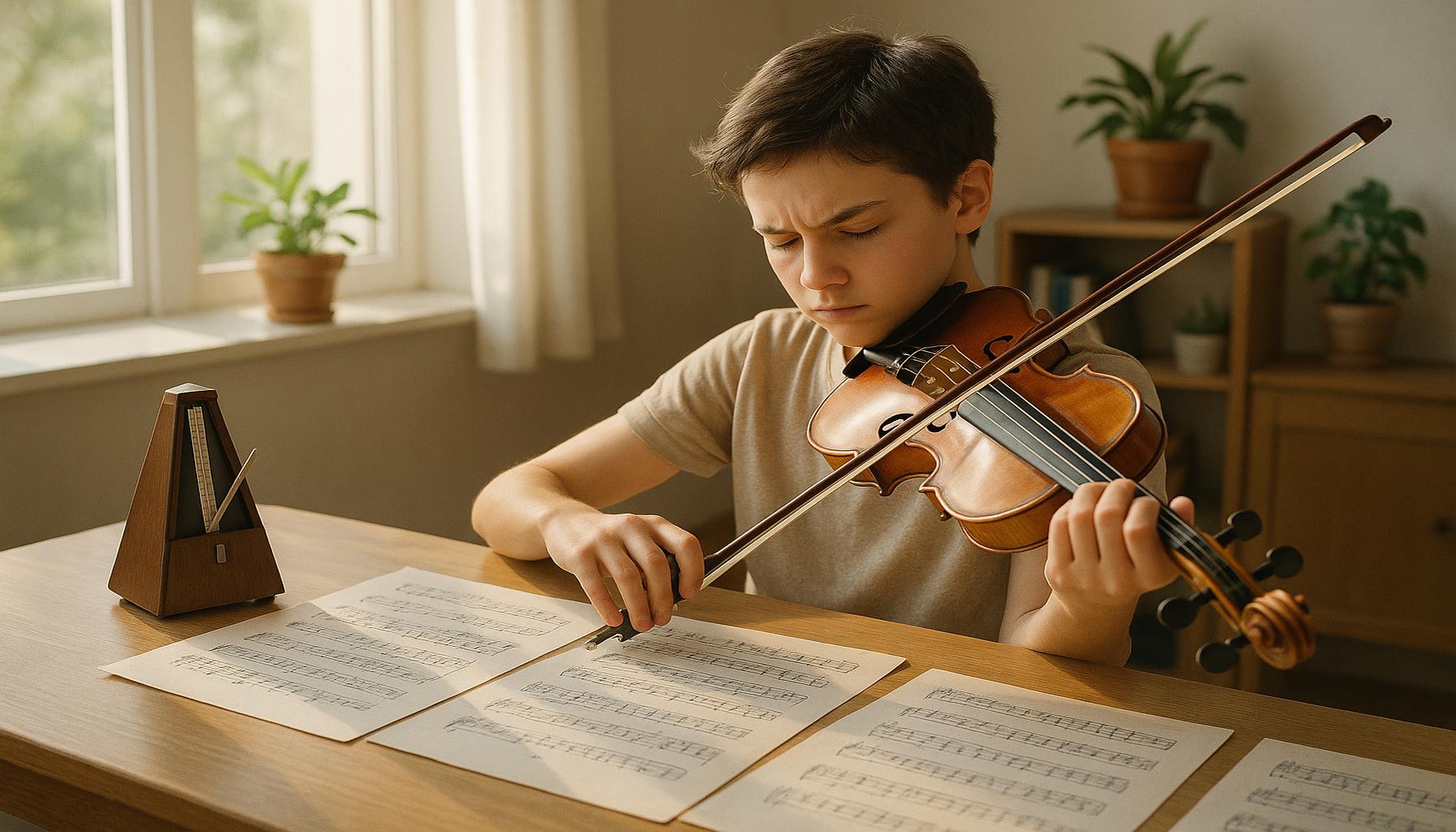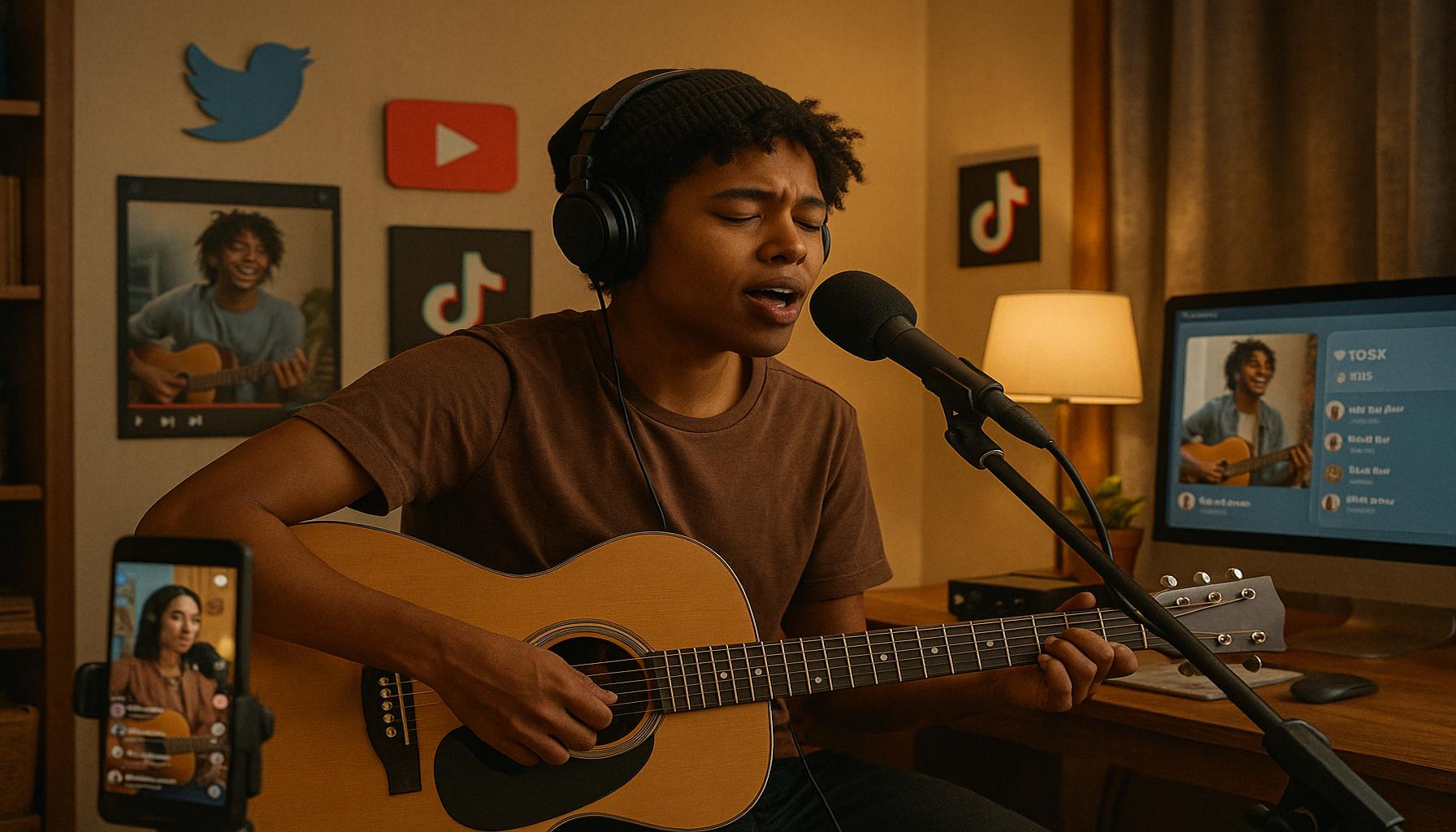The Role of Musical Traditions in Preserving Cultural Identity
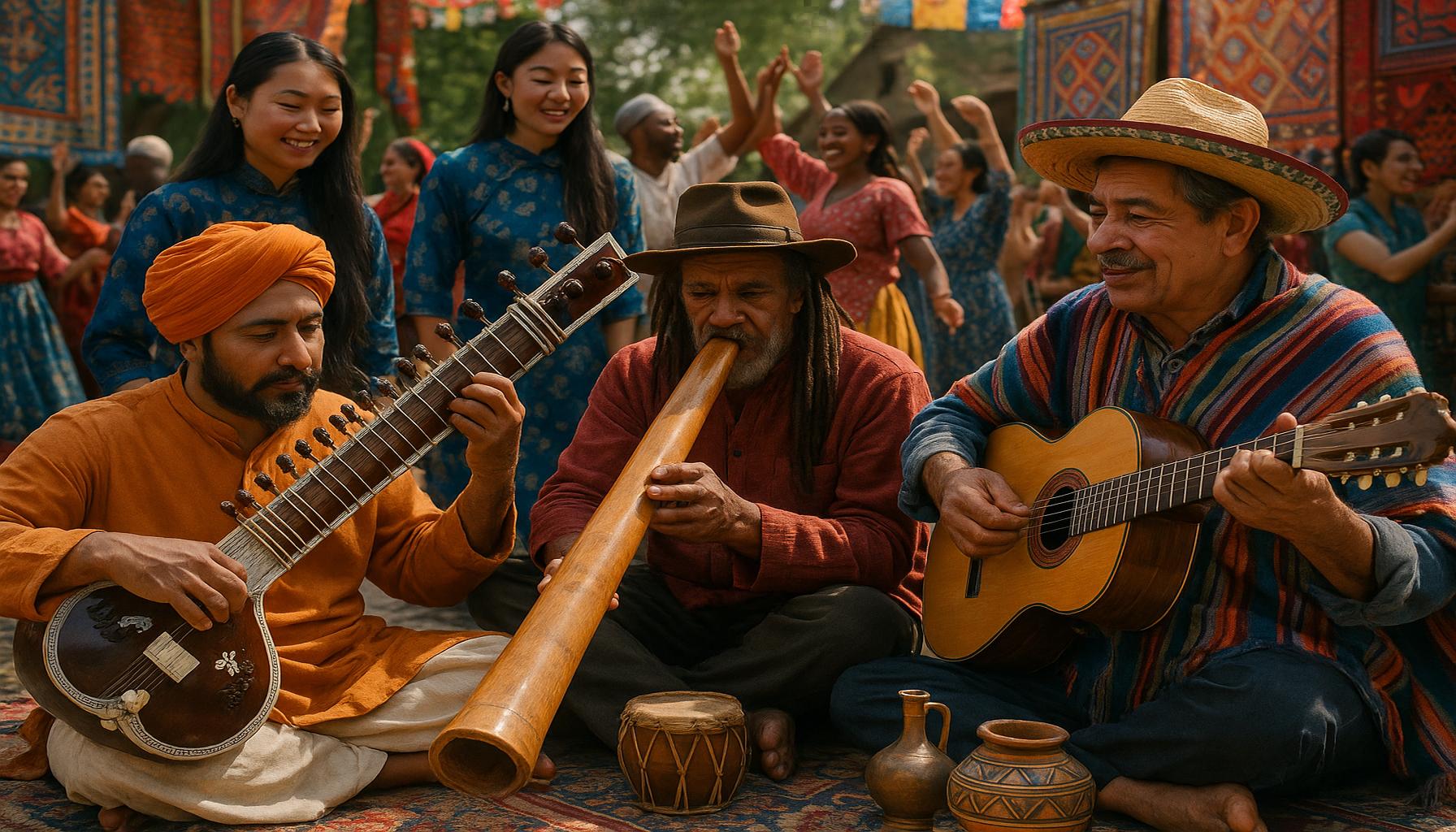
Preserving Heritage Through Sound
Music, a universal language, serves as a vibrant reflection of cultural identity. In the United States, diverse musical traditions play a pivotal role in linking individuals to their roots. Through rhythm and melody, communities articulate their history, beliefs, and values. This connection to heritage goes beyond mere entertainment; it forms a crucial part of collective identity and community resilience.
Consider the following ways musical traditions are instrumental in preserving cultural identity:
- Storytelling: Songs narrate historical events and folklore, passing down wisdom through generations. For example, the ballads of the Appalachian region often recount tales of love, loss, and survival, embedding local history within their melodies. Similarly, Native American music frequently includes oral histories that relate ancient practices, events, and lessons important to tribal identity.
- Cultural Rituals: Music accompanies rituals and celebrations, reinforcing communal bonds and shared experiences. From the joyous rhythms of Mardi Gras in New Orleans, which feature lively jazz ensembles and parades, to the somber hymns sung at African American funerals, music intertwines with significant life events, ensuring that traditions endure through time. These rituals create a sense of belonging and shared identity, vital in maintaining cultural coherence.
- Expression of Struggles: Genres like blues and hip-hop communicate social challenges and resilience, providing a voice to marginalized communities. The blues, which originated in the African American communities of the Deep South, captures the essence of hardship and emotional turmoil, while hip-hop has emerged as a powerful platform for social commentary, addressing issues like systemic racism and economic inequality. Artists like Kendrick Lamar and Billie Holiday utilize their music to articulate the struggles faced by their communities, fostering a deeper awareness and empathy among listeners.
The diversity of musical genres in America, from jazz to country, showcases a rich tapestry of influences that shape national identity. Each style offers a unique perspective on the American experience, sparking curiosity about the stories behind the sound. For instance, country music, with its roots in Appalachian folk and Southern blues, often emphasizes themes of love, loss, and personal anecdotes, establishing a deep emotional connection with listeners from varied backgrounds.
As we delve deeper into this exploration, we will uncover how these musical traditions not only enrich cultural identity but also foster unity in an increasingly globalized world. The rhythm of a salsa beat can resonate with a family gathering just as profoundly as a gospel choir can uplift a community event. Music becomes a universal thread that binds people across different backgrounds, inspiring dialogue and understanding.
Prepare to discover the extraordinary ways in which music and culture intertwine, transforming the fabric of society itself. The nuances of various genres provide opportunities for exploration, reflection, and connection that can deepen our appreciation for the diverse human experience. Through the lens of sound, we may gain new insights into our shared humanity and collective heritage.
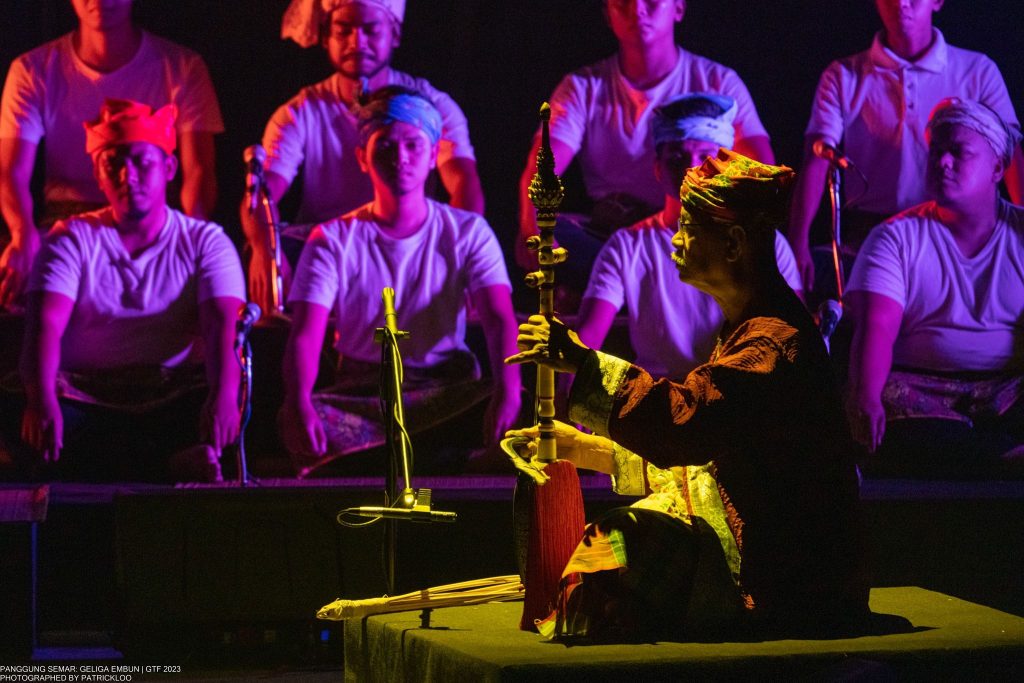
DIVE DEEPER: Click here for more insights
The Power of Musical Language in Cultural Preservation
Throughout history, music has acted as a dynamic conduit for cultural expression, allowing communities to articulate their collective narratives and identity. In the United States, the intricate tapestry of musical traditions is not just a reflection of artistic talent; rather, it encapsulates the struggles, aspirations, and everyday lives of various cultural groups. From the vibrant tunes of traditional Irish jigs to the heart-wrenching chords of the spirituals sung by enslaved African Americans, each melody tells a story, preserving the essence of its cultural roots.
Central to the role of music in preserving cultural identity is its ability to foster community cohesion. Musical gatherings serve as focal points for social interaction and bonding, often transcending generational divides. These gatherings are arenas where individual narratives converge, leading to a collective experience that strengthens communal ties. For instance, the annual Phoenix Folk Festival showcases a wide range of performances that not only celebrate diverse musical styles but also facilitate a cultural exchange, allowing participants to engage with the stories and traditions behind the music.
Defining Elements of Cultural Identity through Music
The preservation of musical traditions relies on key elements that define how communities express their cultural identities. Here are some significant factors:
- Instrumentation: Different communities utilize distinct instruments that carry cultural significance. The banjo, with its African roots, plays a pivotal role in bluegrass, while the accordion is essential in Polka music, highlighting the influence of European immigrants in American culture.
- Lyrics and Language: The content of songs provides insight into the values and experiences of a community. For example, native songs in various tribal languages reflect the importance of ancestry and the natural world, while urban genres often incorporate contemporary slang that speaks to the identity of younger generations.
- Performance Styles: The manner in which music is performed often reflects cultural traditions. Whether it’s the call-and-response styles found in African American gospel music or the intricate footwork accompanying Flamenco dance, performance becomes a crucial part of identity, showcasing community pride and values.
Moreover, the interconnection between music and social movements further illustrates the role that musical traditions play in cultural preservation. Genres such as folk, punk, and hip-hop have long been catalysts for social change, giving voice to the marginalized and challenging societal norms. As seen with Bob Dylan’s anthems of the 1960s or more recently, songs by artists like Childish Gambino, music becomes a potent means of cultural assertion, advocating for rights, recognition, and change.
Through these various facets, music not only honors the past but also shapes a living culture that evolves while maintaining its core identity. The question remains: how do these musical narratives bridge gaps in an ever-globalizing world? As we explore this theme further, it becomes apparent that the rhythms of our diverse sounds not only define who we are today but pave the way for future generations to connect with their roots.
| Advantage | Details |
|---|---|
| Cultural Transmission | Musical traditions serve as a vehicle for passing down stories, values, and practices from one generation to another, ensuring cultural continuity. |
| Community Bonding | Engaging in music fosters a sense of belonging and unity within communities, reinforcing social ties and shared identities through collective participation. |
| Cultural Diversity | Musical traditions enrich the global landscape, showcasing the diversity of human expression and promoting understanding between different cultures. |
The preservation of cultural identity through musical traditions extends beyond mere enjoyment; it is deeply rooted in the values that music represents. Such traditions provide a boundless wealth of knowledge that articulates the history, struggles, and triumphs of communities. They breathe life into folktales and historical narratives, often embodying the essence of a people’s experience.Furthermore, these traditions encourage interaction and collaboration within communities, creating spaces where individuals come together to celebrate their heritage. This is vital in an increasingly globalized world where the threat of cultural homogenization looms. By participating in and sharing their musical heritage, individuals not only affirm their unique identities but also assert their place in a broader cultural continuum.As music transcends barriers, it becomes a powerful tool for social change and a way to advocate for the protection and recognition of various cultural identities. The nuances of different musical styles can challenge stereotypes, provoke critical thinking, and inspire a deeper appreciation for the rich tapestry of the world’s cultures. Thus, the role of musical traditions in cultural preservation is invaluable and deserves exploration and recognition.
DISCOVER MORE: Click here for watercolor techniques
The Role of Music in Educational and Intergenerational Transmission
Beyond the immediate emotional connection it fosters, music serves as a vital educational tool within communities, helping to pass down cultural knowledge and practices from one generation to the next. This intergenerational transmission occurs through both formal and informal means, where music acts not just as an art form, but as a means of storytelling that conveys the values, traditions, and historical journeys of a culture. For instance, in many Indigenous communities, traditional songs carry intricate knowledge about ancestors, land, and community life. Elders serve as cultural custodians, teaching the younger generations not only the songs but also their meanings and significance, ensuring a continuum of cultural identity.
The role of music in education is further amplified by initiatives and programs dedicated to this purpose. Organizations such as the Americana Music Association and local art councils develop workshops and seminars that empower youth while instilling a sense of cultural heritage through music. Educators use songs from various cultures to teach children about diversity, fostering an appreciation for different backgrounds and encouraging the recognition of shared humanity.
Community Festivals and Their Cultural Significance
Community festivals serve as vibrant spectacles where musical traditions play a central role in preserving and celebrating cultural identities. Events such as the Newport Folk Festival in Rhode Island or the National Council for the Traditional Arts events provide platforms for both established and emerging artists to showcase their cultural heritage through music. These festivals not only nurture local pride but also invite broader participation, encouraging the sharing of diverse cultural expressions. Through live performances, workshops, and storytelling sessions, these gatherings transform into historic and contemporary cultural narratives, where music serves as the heart and soul.
Musical festivals also offer unique opportunities for arts and culture tourism. As attendees immerse themselves in the soundscapes of different cultures, they engage with communities on a deeper level, experiencing firsthand the cultural richness and shared narratives. This cultural exchange can be mutually beneficial; while it helps preserve the traditions of the host community, it also educates visitors about the cultural threads that connect societies.
Technology: Bridging the Old and New
Advancements in technology have also transformed how musical traditions are preserved and promoted. The rise of social media and streaming platforms allows traditional music to reach global audiences, often leading to a resurgence of interest in cultural heritage among younger generations. For example, platforms like Spotify and YouTube host various playlists dedicated to folk music from around the world, enabling curious listeners to explore the depth of cultural traditions from the comfort of their homes. These technologies provide a dual function: they act as archives for traditional music while simultaneously facilitating new generations’ engagement with their cultural roots.
Moreover, artists are increasingly blending traditional sounds with contemporary genres, creating a fusion that resonates with younger audiences. This innovative approach not only breathes new life into cultural practices but also allows cultural identities to adapt and flourish in a modern context. Combining traditional instruments with electronic beats or rapping in native languages exemplifies how music evolves while still honoring its heritage.
Through music, cultural identity is not static; it becomes a living, breathing entity, influenced by the dynamic interplay between tradition and innovation. As societal landscapes shift, these musical narratives continue to serve as touchstones for connection, allowing communities to navigate their identities amid an ever-evolving cultural tapestry. The ongoing development of musical traditions asserts their crucial role in shaping and preserving the diverse identities that define the human experience.
DISCOVER MORE: Click here to dive deeper into storytelling
Conclusion
In an increasingly interconnected world, the preservation of cultural identity through musical traditions stands as a testament to the resilience and creativity of communities. As outlined throughout this discussion, music serves not only as a powerful medium for expression but also as a vital mechanism for educating and transmitting cultural values across generations. It is through the sharing of songs, rhythms, and stories that communities forge their individual and collective identities while honoring their ancestral legacies.
Moreover, community festivals emerge as vibrant celebrations, bringing together diverse groups to showcase and experience different cultural expressions. These events foster a sense of belonging and pride, illustrating how music can catalyze unity and cultural exchange. In tandem, the rise of technology has revolutionized the way that musical traditions are documented and disseminated, making cultural heritage accessible to a global audience and rekindling interest among younger generations in their roots.
Ultimately, as musical traditions continue to evolve, they bridge the gap between the past and the present, infusing traditional practices with contemporary relevance. The innovative fusion of styles not only keeps cultural identities alive but also showcases their adaptability in a modern context. As such, the role of music in preserving cultural identity is paramount, reinforcing the idea that each note, rhythm, and melody contributes to the rich tapestry of human experience. Engaging with these traditions offers a pathway to understanding the complexities of our shared histories and the vibrant tapestry of cultures that enrich our world.
